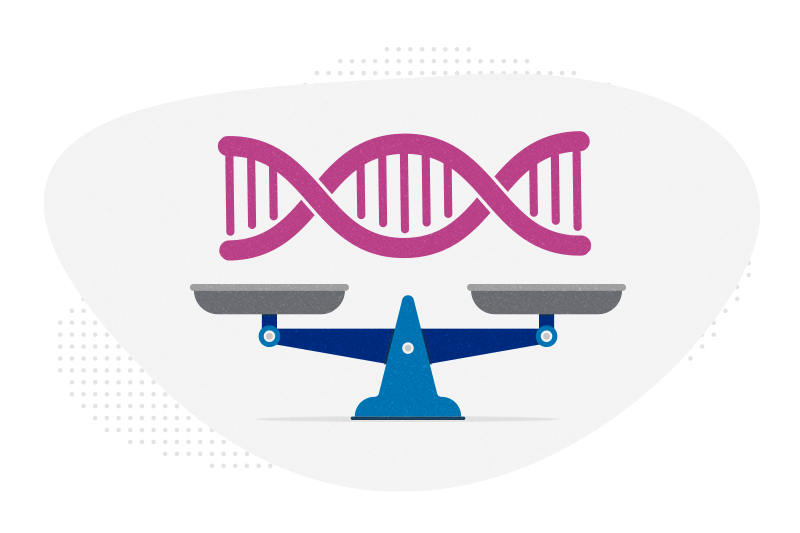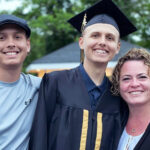Gene therapy for adrenoleukodystrophy: Studies find both risks and benefits

Cerebral adrenoleukodystrophy (CALD), portrayed in the film Lorenzo’s Oil, is a devastating disorder caused by a mutation on the X chromosome. Boys with CALD progressively lose their neurologic function and, if untreated, eventually become non-responsive. Most pass away within 10 years of diagnosis.
Until recently, the only treatment for CALD was a blood (hematopoietic) stem cell transplant, a difficult procedure that requires finding a matched donor and poses a risk of life-threatening graft-versus-host disease or graft rejection. In 2017, a team led by Boston Children’s Hospital and Massachusetts General Hospital reported exciting early results with a new treatment that uses patients’ own cells: gene therapy. Of 17 treated boys, 15 had stable neurologic function more than two years later.
“We were excited and optimistic about the future,” says Christine Duncan, MD, director of Clinical Research and Clinical Development for Boston Children’s Gene Therapy Program and a senior physician with the Dana-Farber/Boston Children’s Cancer and Blood Disorders Center.
Now, two follow-up studies in The New England Journal of Medicine confirm that the gene therapy, today called SKYSONA, can stall or ward off CALD’s devastating effects when given before significant symptoms arise. But they also detail a risk for cancer that families will need to carefully weigh.
CALD gene therapy’s risks and benefits
The first study, led by Duncan and Florian Eichler, MD, director of the Leukodystrophy Clinic at Massachusetts General Hospital, brought good news. Of 67 treated boys, 80 percent were alive and free of serious disabilities an average of six years later. These were defined as blindness, loss of the ability to communicate, need for tube feeding, wheelchair dependence, complete incontinence, and loss of all voluntary movement.
“We cautiously celebrate that we have been able to stabilize this neurologic disease and give these boys back a fulfilling life,” says Eichler. “When I initially began treating patients with CALD, 80 percent came into our clinic at death’s door, and now the ratio has flipped.”
But a companion study led by Duncan and Boston Children’s hematopathologist Jacob Bledsoe, MD, found that seven of the 67 boys, about 10 percent, developed blood cancers. Six were of a type known as myelodysplastic syndrome (MDS); one was a leukemia.
Investigations revealed that the delivery vector, a non-infectious virus used to carry the gene, went astray and landed near a cancer-promoting oncogene. “The gene therapy treatment works, but cancers are a serious and unfortunate consequence of using insertion vectors,” says David A. Williams, MD, chief of Hematology/Oncology at Boston Children’s who was coordinating investigator and senior author on both reports.
The five boys who developed MDS after gene therapy received blood stem cell transplants from matched donors as a rescue treatment. Four of the five remain alive and cancer-free. However, one died from a complication of the transplant: graft-versus-host disease, the result of donor cells attacking the boys’ own tissues. The other two boys are still undergoing treatment for their cancer.
Making CALD gene therapy safer
A long-term follow-up study continues to track SKYSONA’s outcomes; it will follow boys for 15 years from the start of treatment. But separately, an international collaboration of scientists led by Boston Children’s is looking to change the gene delivery vector to make it safer.

Boston Children’s researchers are also investigating gene editing, which would be more precise. They are also investigating less toxic forms of the conditioning regimen used before the gene therapy, part of a wider effort to improve gene therapy for multiple conditions.
Weighing treatment options
Duncan works closely with families to help them weigh the risks and benefits of gene therapy versus those with hematopoietic stem cell transplant. “CALD is a horrible disease,” she says. “Boys with CALD deserve to have options and families need to be fully informed of the risks.”
Though gene therapy does carry a cancer risk, it uses boys’ own cells, avoiding some of the complications of stem cell transplant: the need for a closely matched donor and the risk of GVHD or graft rejection.
“We see gene therapy as an alternative for patients who don’t have a highly matched donor, and most patients don’t,” says Williams. “It’s a complicated decision-making process, and the risks are real. But the progress we’ve made offers hope for families facing limited options. We are working hard to develop both better gene therapy options and better hematopoietic stem cell transplant treatments. Every advancement brings us closer to the answers families desperately need.”
Disclosure: Duncan is a consultant for bluebird bio, which funded the studies.
Related Posts :
-

Gene therapy halts progression of cerebral adrenoleukodystrophy in clinical trial
Adrenoleukodystrophy — depicted in the 1992 movie “Lorenzo’s Oil” — is a genetic disease that most severely affects boys. Caused by ...
-

Cerebral adrenoleukodystrophy: How the Cooksons dodged a devastating disease
Heather Cookson believes that if she hadn’t insisted her son Ricky get a brain MRI to investigate his frequent ...
-

Making history: Gene therapy for CCALD gives Conner a second chance
Like a lot of 6-year-olds, Conner Hess finds joy in simple acts: drawing pictures, cuddling his two cats, and playing ...
-

In a thriving gene therapy program, nursing leadership is the driving force
Gene therapy was made possible by decades of technological advances. But to execute gene therapy at scale? That would not ...





